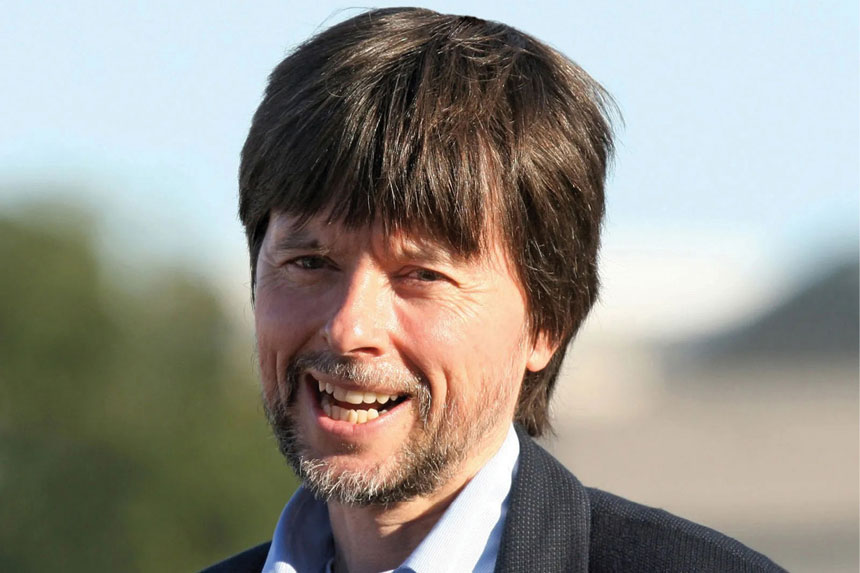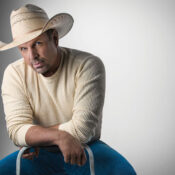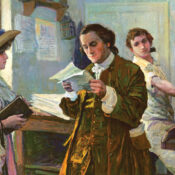Ken Burns’s acclaimed and popular documentaries have brought history to life, giving new perspective to war, exploring the lives of legends, and digging into the roots of American culture. Now he’s taking on a symbol of the American West that we nearly lost, in The American Buffalo, which debuts on PBS October 16.
Don’t expect a calm nature film. Burns unleashes the powerful, deeply moving, and often shocking story of the near extinction of these giants, tying that dramatic tale to the equally heart-breaking devastation of Native Americans who depended on the buffalo for their survival. Burns doesn’t pull any punches. “I think it says some pretty difficult stuff that we try to spend most of our time sanitizing and whitewashing,” he says.
Jeanne Wolf: You make buffalo so sympathetic. What did you think when you first saw a herd of these giants?
Ken Burns: They’re so huge and yet so agile. They can jump a six-foot fence and run up to 35 miles an hour. They’re the largest land mammals in North America, and they’re magnificently beautiful. But when I was out in Montana, there were signs that said, “Kill a Buffalo, Save a Cowboy.” They eat grass! So that’s the kind of thinking that led to near extinction. By the early 1890s, most buffalo had been slaughtered. You could search for months and not find one. Tens of millions of buffalo wantonly killed, and everything but the hides left to rot. We have pictures of mountains of buffalo skulls in the film. You just sort of shake your head and go, “What kind of madness produces this?”
Now, there’s approximately 350,000 bison left out of maybe 50 million. The plains are pretty empty. Wouldn’t it be great to get back to what people call the American Serengeti? We pay to go to Africa to see elephants and lions. We had that here, places where the buffalo roam and the deer and the antelope play. It’s “home on the range” that we sing about. We ought to be able to preserve the most beautiful places on our continent for everybody and for all time. That was the dream we explored in our national parks films. The story of the American buffalo is an extension of that.
JW: Men almost treated the Native Americans worse than the animals. Such cruelty and destruction.
KB: Why do we discount the people who were here first in America and say that their experience over hundreds of years before we came is somehow less than ours? Particularly in the Plains tribes, the bison is woven into their creation myths. Native Americans have a spiritual connection to what was their life source. Imagine what it’s been like for them to watch the systematic slaughter of all of these animals just for hides, leaving tons of meat to rot. Native Americans have much to tell us about coexistence with nature and that could actually help us save the planet. But we had a policy of “kill the Indians, save the white man.” We shipped them off, put them in schools to leave their ways behind and learn ours. We broke every treaty we made with them and carved up the reservations we gave them for development. We need to realize that it isn’t either us or them. There is coexistence.
JW: There does seem to be growing awareness about the need to protect nature and to appreciate the past of indigenous cultures. You know the ugly truths, but have you held on to your sense of optimism?
KB: I’ve spent the last 50 years making films about the U.S., but also films about us, all the intimacy of that two-letter plural pronoun, all the majesty, the complexity, the contradiction, the controversy of us. What I’ve learned is there’s only us; there’s no them. A Native American mother loves her children just as much as anybody else loves their children.
Now I look at those buffalo; they’re not gone. They are beginning to roam in increasingly larger pastures. That makes my heart sing. Will that end human venality? No, it will not. It’s going to take a bit more effort and more tolerance of others. We’re going to have to understand about compromise, not “my way or the highway.” Nobody gets all that they want. And yet you look at people now and it’s only “my way.” We’re on the cusp of a lot of big global changes. A lot of it is destabilizing. At the same time, there’s never been a moment where human possibilities are greater. You can save the buffalo. You can treat native people with respect. You can address things together even if everybody is not going to agree on everything.
—Jeanne Wolf is the Post’s West Coast editor
This article is featured in the September/October 2023 issue of The Saturday Evening Post. Subscribe to the magazine for more art, inspiring stories, fiction, humor, and features from our archives.
Become a Saturday Evening Post member and enjoy unlimited access. Subscribe now




Comments
The signs in Montana say “Save the Cowboy, stop American Prairie Reserve”. There are no signs that say “Kill a buffalo, Save a Cowboy”. I live in north central Montana and no one here has ever seen such a sign. Ken Burns comment demonizing ranchers and cowboys for “that kind of thinking” is way off base and UNTRUTHFUL. As a well known media figure, he needs to be corrected and pay more attention to what the signs really say and mean and stop spreading misinformation. The cowboys and ranchers in this area are NOT about killing the buffalo.
Can Ken Burns document where and when he saw the signs that said ‘Kill a Buffalo, Save a Cowboy’? As someone who lives in the area that the American Prairie Reserve operates, I have never seen such a sign.
Jeanne: You and Ken Burns have a very naive understanding of the restoration of bison on prairie lands of the West and have left out the negative economic impacts of putting free roaming bison back on the prairie grasslands. I’d like an oportunity to tell the perspective of farmers and ranchers who depend on public land for their livelihoods. For example, wolves and bison used to roam the area now known as New York City. Let’s restore these critters back there. Crazy? Yes, but ditto Montana.
Very entertaining! I receive the Saturday Evening Post, but enjoyed reading the articles here!
Great interview Jeanne. I’m looking forward to Ken’s ‘The American Buffalo’ on PBS in October.